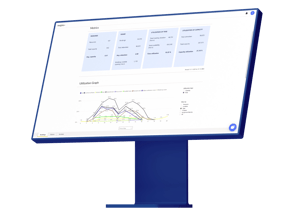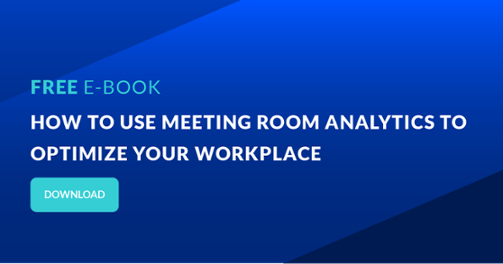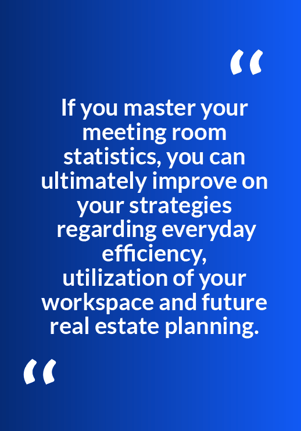You meet to share ideas, make some progress, gain some results, move forward, collaborate, learn, improve, and grow. This means that people end up in a ton of meetings every week in a professional context. It is simply the way modern organizations work these days. Therefore, meetings are an integral part of business life.
What goes on in your conference rooms can tell you a lot about your company from a process and productivity standpoint. Today, the best and most comprehensive Meeting Management Software can help you systematically aggregate all your meeting data to help you design a modern workplace that supports those meetings and matches the requirements of your employees.![]()
![]()
Not a fan of lengthy blog posts? No worries. This article is based on the E-BOOK:
Use meeting room analytics to understand workspace utilization
Using meeting room analytics tools in meeting management software lets you track and measure important metrics related to your meetings so that you can go back and analyze and understand them. This information helps you plan for the future of your business and reduce the cost of meetings. That data is critical to understand your consumption of your workplace and utilization of your meeting rooms.
If you master your meeting room statistics, you can ultimately improve your strategies regarding everyday efficiency, utilization of your workspace, and future real estate planning.

Understand, design, and empower the modern workplace
Occupancy, Time Score, Utilization Rates, and preferred “meeting room type.” These are important metrics to master.
By looking at the occupancy and usage rates of your meeting rooms, you are able to get a clearer picture of which floor or departments of your business are leveraging their meeting rooms and to what extent. Do we have enough space, or do we have an overcapacity?
This information is vital for your real estate planning department to make important decisions about the layout of your office space. This often includes subtle details like how many desks or cubicles to place on a floor compared to how many meeting rooms.
By using your meeting data to measure and collect the usage/occupancy rates of your meeting rooms, you will soon find out some interesting facts about how your workforce utilizes your space. It is not how you would think!
For example, you may find that your sales team prefers traditional, formal meetings in a room that is equipped with tools like presentation screens, projectors, or whiteboards.
Meanwhile, you might find your marketing division prefers more informal meeting environments in open spaces and does not leverage the same room equipment as the sales team. In fact, these relaxed meetings are becoming increasingly popular in today’s office culture, also called activity-based working. But does your workplace support that? And do you have the right amount of these “huddle rooms”?
Your occupancy rates, on the other hand, will quickly tell you whether you have too many or too few meeting rooms on a particular floor.
Ultimately, using your scheduling systems and tools to track and measure these metrics allows you to find your company’s sweet spot regarding the ratio between people and conference rooms. There is no perfect benchmark or industry standard here. You have to learn what is the right fit for you to support your work culture and processes.
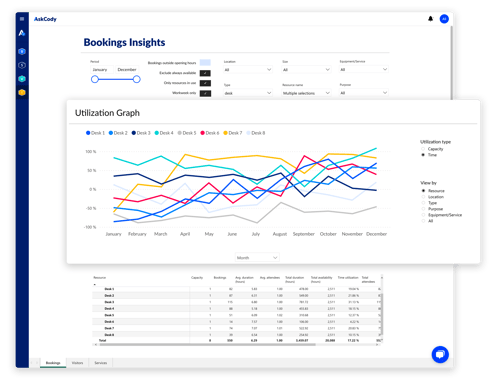
Find patterns, learn habits, and find the right capacity
By leveraging your Meeting Management Software to learn your meeting habits, you will quickly see how many people are invited to your meetings on average. Have many attended external meetings? How many participated in the weakly roundup?
Some statistics suggest that most meetings contain four people or fewer. However, you might find that certain departments have a consistent need for meetings of a greater number such as 8 or 12 people.
Once you have this data on hand, you can go back and reassess the efficiency of your real estate. If for example, you find your meetings contain an average of 4 people but all your meeting rooms are set out for at least eight people, you’ll want to consider making better use of this space, perhaps dividing these rooms into smaller ones.
Conference rooms can include a variety of new sensor technologies like IoT or BLE Beacons designed to track the attendance of individual members for companies to get a better idea of meeting room usage in their offices. There are a lot of possibilities to include IoT devices as a data source as well that will improve your insights into meeting patterns as well. Is there a correlation between the number of meetings, who people meet with, and your productivity score in your company?
Other features can include “meeting confirmation” or “claiming a room,” which allows you to track whether a meeting took place. Ghost meetings are a productivity killer for all companies. Knowing how many no-shows you have prevented gives you insights into how good (or bad) your team is at attending booked meetings. Having accurate data allows your real estate planning team to make clear, concise decisions about your office space and how the layout is designed.
Take control of your meeting rooms
Teach your team a valuable lesson
Your scheduling software can help you teach your team valuable lessons about meeting room culture. Meeting room analytics can be associated with an organizer and over time give you valuable insight into the different meeting techniques of your various team members. Therefore you can leverage data to change behavior and culture.
By using meeting management software with built-in analytics capabilities, you will get valuable insight into which team members plan and run meetings efficiently. From there, you can create opportunities to help out those that need it most, ultimately driving up the efficiency of your entire team.
For example, you may find that some organizers book rooms that are much larger than what they needed. Based on your analytics, you can reach out to those team members, train them on how such a seemingly trivial issue can have a big effect on the company, and motivate them to improve booking behavior in the future.
By talking to your staff based on your data, you can also get to the bottom of why they plan meetings the way they do. You might find that it is a Facility Management issue and that your smaller rooms or huddle rooms are consistently busy.
Alternatively, you might find that it is because some rooms don’t have the same features as others and lack the right in-room equipment. From there, you can equip your other rooms accordingly to stop this from happening in the future.
Your meeting room data can also help you track which team members are booking rooms for longer than needed. Are meetings already ended before time? You might learn that your meeting displays lack a cancel option, for example.
Take control of your meeting rooms now
Thanks to new and comprehensive meeting management solutions, it is now easier than ever before to track how your meeting rooms are being used and your entire workspace is utilized. Whether you are concerned with real estate or the efficiency of your team, these metrics can help you make informed decisions about your company’s meeting rooms and plan accordingly for the future. Now you do not have to guess when people ask how many meetings you have each month or what your occupancy rates are.
These analytics tools are becoming more affordable and accessible as technology and software become more advanced. With cloud-based technologies, the best solutions integrate with your Exchange, Outlook, and Office 365 platform, meaning you have the possibility to “look back in time” and learn how your office space was being used, before the implementation of a new meeting management solution.
When you do not know what is happening in your meeting rooms, you can not improve the process. Take control of your meeting rooms today with a meeting room analytics tool. This is the easiest way to empower users with data and foster a data-driven meeting culture.
Five ways meeting room analytics optimizes your workplace
Usage and behavior data are critical to understanding the utilization of your workspaces and meeting rooms, improving meeting culture, and reducing the overall cost of meetings. Here is how:
1. Understand workspace utilization
Instantly enhance productivity and room utilization by controlling or regulating meeting room booking behavior. Collect and measure usage and occupancy rates of your meeting rooms to uncover some interesting facts about how your workforce utilizes your space and learn how to use those spaces even more optimally.
2. Uncover trends
Meeting room analytics deliver quantifiable data that show how technology, facilities, and employees are engaging in conference rooms. Go deeper into conference room activity with daily reporting of key metrics like meetings, attendees, and occupancy to get the full story of how your office space performs. Know exactly the busiest times of day, most popular types of rooms, and most common size of meetings.
3. Improve meeting room offerings
See exactly what employees are looking for to better provide the right type of rooms, equipment, and technology employees need. Understanding employee needs enables companies to improve the entire meeting booking process. With more spaces that people need available, the overall efficiency of the office is increased.
4. Simplify
Analytics delivered in a user-friendly dashboard cuts through complexity and allows users to make decisions based on valuable data and key metrics. Get answers to your questions about people, places, and events without the need for any on-prem installation.
5. Empower everyone
A fully integrated meeting room analytics tool not only enhances your office’s meeting management suite, but it also empowers everyone in the organization with data. User-friendly analytics bring insight to everyone, enabling better decisions about shared spaces. A meeting room analytics tool like AskCody Insights that seamlessly integrates with Outlook and Office 365 means there is no third-party platform to learn or toggle between, putting data directly in the hands of everyone.
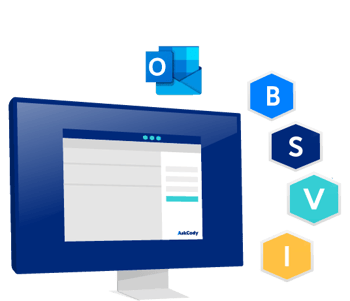
![]()
There is room for improvement
Learn how to improve employee productivity by booking and managing meetings and enhance utilization and organizational processes from an integrated meeting management system.



